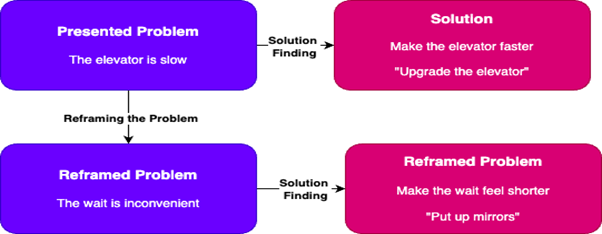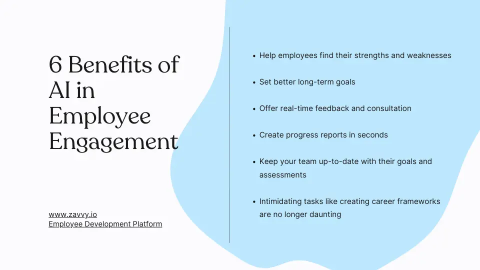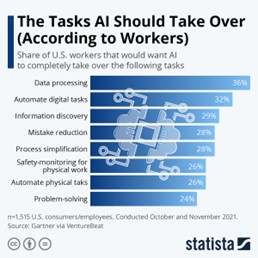Gone are the days when being a brilliant business analyst meant you could hide in a dark room crunching numbers and never utter a single word to another human being. In the realm of business analysis, interpersonal skills have grown to be as crucial as a hot cup of coffee on Monday mornings, and the spotlight is shining brightly on communication prowess.
In today’s dynamic and information-driven business world, effective communication plays a pivotal role in driving success and achieving desired outcomes. For a business analyst, possessing strong communication skills is not merely an option — it is a necessity. As the liaison between stakeholders, technical teams, and project managers, business analysts play a crucial role in ensuring the success of a project.
Why Communication Skills Matter for Business Analysts
Effective communication is the foundation of successful business analysis. It enables business analysts to articulate complex ideas and concepts concisely and clearly. By communicating effectively, business analysts can ensure that requirements are accurately captured and understood by all stakeholders, minimizing the risk of misinterpretation, and avoiding costly project delays or failures.
Effective communication helps business analysts build trust and credibility with stakeholders. By clearly articulating ideas, presenting data-driven insights, and actively engaging stakeholders in the decision-making process, business analysts can instil confidence and foster a collaborative and conducive working environment for open dialogue.
Moreover, business analysts often serve as mediators between different stakeholders who may have conflicting priorities or perspectives. In these situations, effective communication becomes even more critical as it helps productive discussions and find mutually beneficial solutions. By creating an inclusive and collaborative environment, business analysts can promote teamwork, consensus building, and efficient decision-making, thereby contributing to the success of projects and initiatives.
Business analysts must also be skilled in active listening, empathy, and building rapport and fostering strong relationships with stakeholders. This helps them gain a deeper understanding of the stakeholders’ perspectives, and uncover implicit needs and concerns, which in turn, allows them to tailor their communication and recommendations that address the underlying issues and drive positive change within the organization.
The Spectrum of Communication Skills
Communication skills encompass various dimensions, including verbal communication, written communication, non-verbal communication, and emotional intelligence. Each of these dimensions plays a critical role in the day-to-day activities of a business analyst.
Verbal Communication Skills
Verbal communication involves speaking and listening. These skills are essential for conducting interviews, facilitating meetings, and delivering presentations. Proficient verbal communication allows business analysts to articulate ideas clearly, ask relevant questions, and actively listen to gather valuable insights and ensure a complete understanding of the stakeholders’ perspectives.
When it comes to verbal communication, it is not just about the words spoken but also the tone, pace, and clarity of speech. The way information is conveyed can greatly impact how it is received by stakeholders. Effective verbal communication also involves the ability to adapt to different audiences and situations. A skilled business analyst can tailor the language and approach based on the stakeholders they are communicating with, ensuring that the message is understood and well-received.
Written Communication Skills
Written communication is equally important for business analysts. Business analysts with exceptional written communication skills possess the ability to organize their thoughts in a logical and coherent manner. It involves creating detailed documents, such as requirement specifications, business process flows, project reports and communicating project updates. Additionally, attention to detail is crucial to ensure that there are no errors or ambiguities in the documentation.
Strong written communication skills enable business analysts to convey complex information accurately and concisely and ensure that all stakeholders are on the same page.
Moreover, effective written communication involves the ability to adapt the style and tone of the message to the intended audience. Different stakeholders may have varying levels of technical expertise or familiarity with the subject matter. By tailoring the communication to suit the needs of each stakeholder, business analysts can ensure that the information is accessible and meaningful to all.
Non-Verbal Communication Skills
Non-verbal communication includes body language, facial expressions, and gestures. While often overlooked, non-verbal communication can convey important messages and influence how stakeholders perceive information.
When engaging in non-verbal communication, business analysts must be mindful of their own body language the non-verbal cues. Maintaining eye contact, using appropriate facial expressions, and having an open and relaxed body posture can all contribute to effective non-verbal communication.
These skills are particularly important when conducting interviews or facilitating workshops as being aware of non-verbal cues enables business analysts to detect subtle signs of agreement or disagreement. For example, a nod of agreement or a smile can signal understanding and support. On the other hand, crossed arms or a furrowed brow may indicate scepticism or disagreement. By aligning the non-verbal cues with the verbal messages, business analysts can adjust the communication approach, accordingly, fostering a more collaborative and productive environment.
Furthermore, cultural awareness is an important aspect of non-verbal communication. Different cultures may have different norms and interpretations of non-verbal cues. Business analysts must be sensitive to these cultural differences and adapt their non-verbal communication accordingly to avoid misunderstandings or misinterpretations.
Emotional Intelligence
Emotional intelligence is a critical aspect of communication for business analysts. Understanding and managing emotions, both their own and those of others, allows business analysts to navigate conflicts, handle difficult conversations, and build strong relationships. Emotional intelligence helps business analysts adapt their communication style to different stakeholders, fostering a positive and collaborative work environment.
Advertisement
Mastering Communication Skills as a Business Analyst
While some individuals may possess natural communication abilities, it is a skill that can be continually developed and refined with dedication, deliberate practice, and continuous improvement. Here are some strategies to develop and strengthen the communication abilities as a business analyst:
Active Listening Techniques
Active listening goes beyond merely hearing what someone says. It involves fully engaging with the speaker, understanding the message and intentions, and providing appropriate feedback. Practice active listening by providing undivided attention to the speaker, maintaining eye contact, and demonstrating empathy. By practicing active listening techniques, business analysts can ensure an accurate and complete understanding of stakeholders’ needs and requirements.
Practice Empathy
Develop your emotional intelligence by actively practicing empathy. Empathizing with stakeholders and understanding their challenges can significantly enhance communication. Understand other’s perspectives and emotions by putting yourself in their shoes, business analysts can anticipate concerns, build stronger connections and offer tailored solutions.
Polishing Written Communication
Business analysts often produce detailed reports, requirements documents, and emails. Improving writing skills is crucial to convey ideas clearly and professionally. Avoid jargon and fancy words; use plain language to ensure everyone can comprehend the content.
Enhancing Presentation Skills
To deliver impactful presentations, business analysts should focus on structuring the content, maintaining a confident and engaging presence, and utilizing visual aids to support their message. Practice presenting in front of a mirror before presenting it to a larger audience. This technique will help to adapt the communication style to suit the needs and preferences of different stakeholders. Simplify complex technical concepts for non-technical audiences or emphasise key benefits and outcomes for executive-level stakeholders. Tailor the presentations, to resonate the message with the audience and to convey the desired information effectively.
Develop data visualization and storytelling skills to effectively communicate complex ideas and facilitate decision-making.
Utilize Technology
Leveraging communication tools and technology can greatly enhance effectiveness as a business analyst. Get familiar with collaboration platforms, project management software, and communication tools to streamline communication processes and ensure efficient information sharing.
Engage in Cross-Functional Collaboration
Collaborate with professionals from various disciplines to gain exposure to different communication styles and approaches. This experience will help to adapt the communication strategies to diverse audiences.
Be Flexible! Seek Feedback, Learn and Adapt
Interaction with stakeholders from diverse backgrounds and cultures is business as usual for a business analyst. Adapting the communication style to suit different individuals and situations is crucial for effective collaboration. Understand and respect cultural differences, adjust the language and approach, and actively seek feedback from colleagues, stakeholders, and mentors to identify areas for improvement and understand how your communication style is perceived. Flexibility in communication ensures that you can connect with stakeholders on their terms, fostering a more inclusive and productive working environment.
The Growing Importance of Interpersonal Skills in Business Analysis
In the evolving world of business analysis, effective communication skills are indispensable for the success of business analysts. By honing the ability to listen actively, articulate clearly, and adapt to different stakeholders, business analysts can be established as an indispensable asset to any organization. As the business landscape continues to evolve, those who master the art of communication will navigate challenges with finesse and lead projects towards triumph. Effective communication is not just about conveying information — it’s about building relationships, understanding needs, and fostering collaboration.
The ability to communicate effectively is the key to unlocking new opportunities and driving positive change in the dynamic world of business analysis.
Remember, even in the world of business analysis, laughter is the best medicine — just make sure you’re laughing with your stakeholders, not at them.
Happy communicating 🙂







